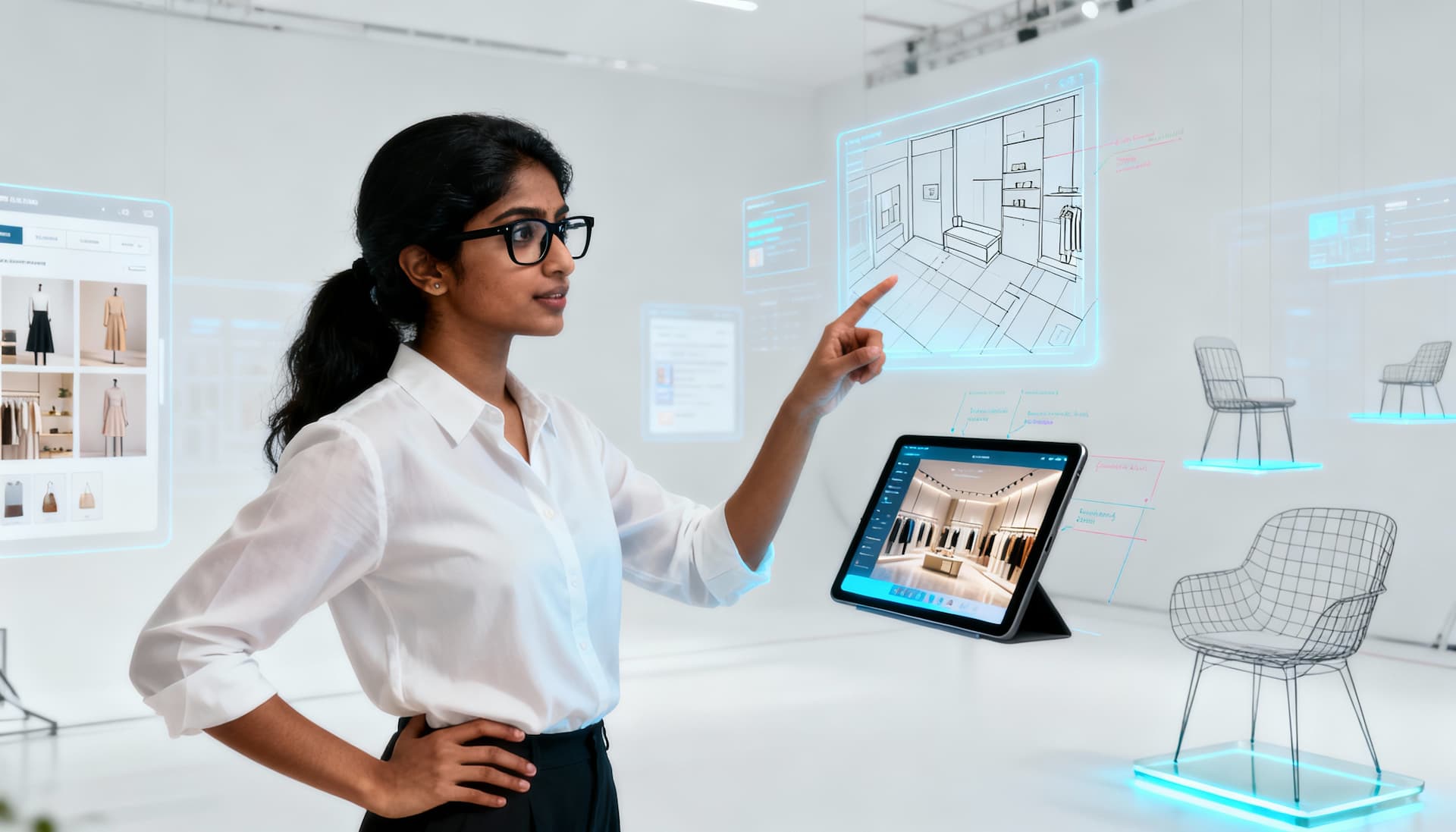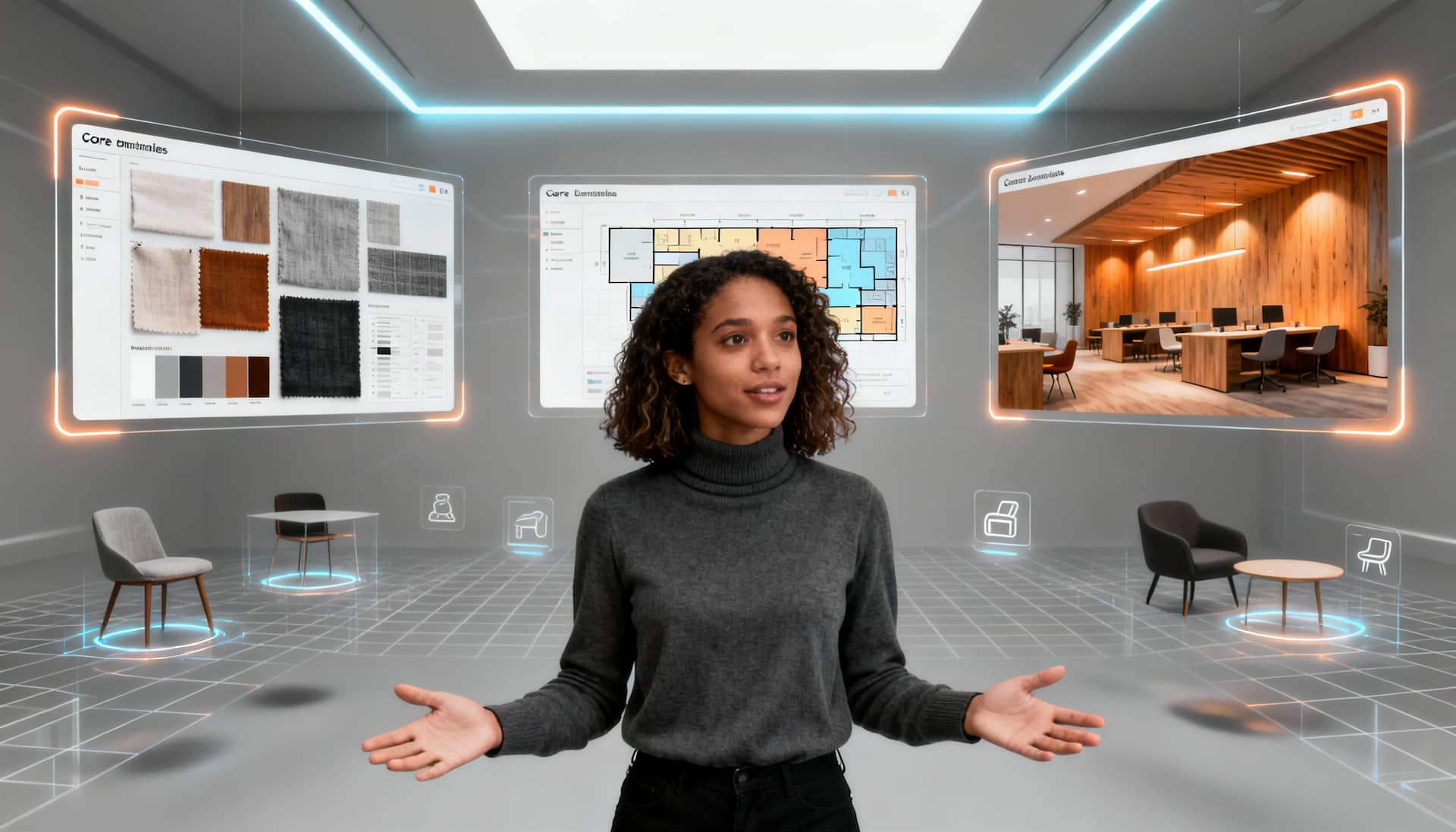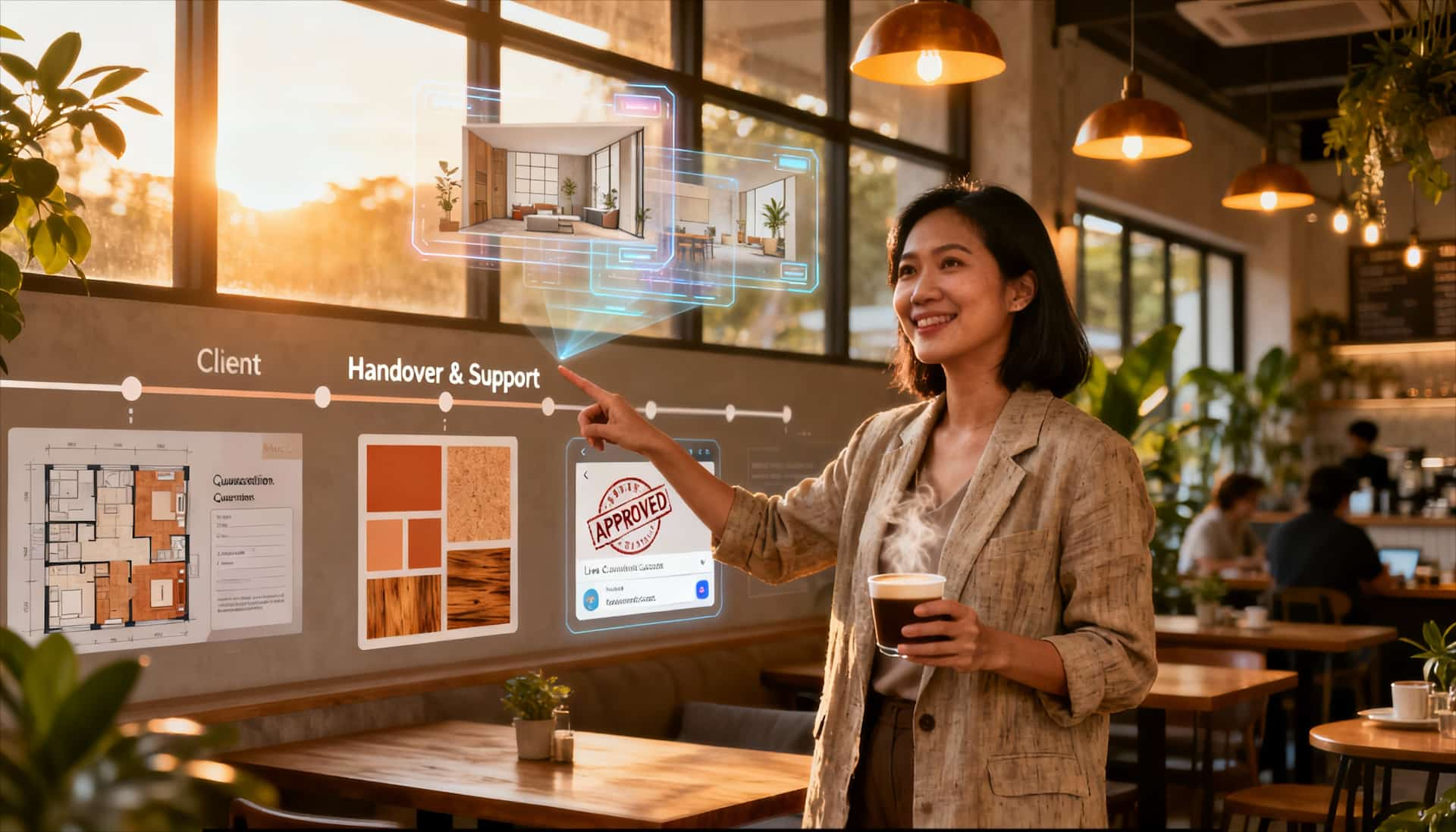Streamlining collaboration, visualization, and delivery entirely online
Definition & Context
Virtual commercial interior design is the process of planning, developing, and delivering commercial spaces, such as offices, retail stores, restaurants, or hotels, exclusively through digital tools.
Instead of multiple site visits, the designer gathers information, creates concepts, and delivers a complete, ready-to-implement design package, all through online communication and a structured workflow.
For commercial clients, this means less travel, shorter timelines, and access to top designers regardless of location.
For designers, it’s the opportunity to scale internationally while maintaining a consistent method of working.
What Is the Virtual Commercial Interior Design Process?
Direct Answer
It’s a clear sequence of steps: understanding the client’s brand and functional needs, creating a visual concept, organizing structured feedback, and delivering a complete package ready for execution.
Example
A luxury fashion boutique in Dubai wants to rethink its layout to improve customer flow and highlight seasonal collections. The designer collects measurements and photos remotely, creates a mood board reflecting the boutique’s brand identity, develops a new floor plan, and delivers a complete set of installation drawings, without ever visiting the site.

Key Stages in a Virtual Commercial Interior Design Workflow
- Define & Onboard
Direct Answer
Start by clarifying goals, style direction, and functional needs. This sets expectations and ensures the design meets real business objectives.
How It Works
- The client completes a detailed questionnaire covering the space’s purpose, target customer profile, brand colors, preferred materials, and budget.
- The client provides measurements, photographs, and videos of the site.
- The designer reviews these inputs and holds a video consultation to confirm details and discuss inspiration.
Practical Tip
Provide a measurement guide showing how to measure walls, door heights, window placements, and ceiling heights. Request photos from multiple angles, ideally taken in daylight.
- Concept & Visualization
Direct Answer
Turn the gathered information into tangible visual ideas that show mood, color palette, layout, and functionality.
How It Works
- Mood Boards: Present colors, textures, and key furniture styles.
- Layout Plans: Show functional zones, entrances, seating, product displays, work areas.
- Renderings: Provide realistic visuals to help the client picture the final space.
Example
For a co-working space, the designer might present:
- An open plan with large shared tables.
- A zoned layout with private booths.
- A hybrid design with both collaborative and quiet zones.

- Feedback & Iteration
Direct Answer
The client reviews the concepts and requests adjustments to better align with brand or operational needs.
How It Works
- Feedback is gathered in writing or via annotated PDFs.
- Designers adjust layouts, swap materials, or reconfigure furniture.
- One or two rounds of revisions are usually enough to finalize the design.
Example
A restaurant client might request more high-top tables near the bar or a warmer color scheme for a more intimate atmosphere.
- Detailed Design & Documentation
Direct Answer
Once concepts are approved, the designer prepares all technical documents needed for implementation.
Included
- Dimensioned floor plans
- Furniture and fixture placement diagrams
- Lighting plans
- Materials and finishes schedule
Example
For a retail store, the handover package might include custom shelving drawings, a lighting plan highlighting key display areas, and a finishes schedule specifying colors, textures, and material codes.
- Handover & Implementation Support
Direct Answer
The final package is delivered digitally, and the designer may offer follow-up support to ensure smooth execution.
Support Options
- Email or video calls during construction to answer contractor questions.
- Coordination with the client’s chosen contractors.
- Optional review once installation is complete.
Example
For an office fit-out, the designer might provide two weeks of post-handover support to answer questions about finishes or the installation of custom furniture.
- Scaling & Service Packages
Direct Answer
Offer tiered packages to suit different budgets and project needs.
Sample Structure
| Tier | What’s Included |
| Concept Only | Questionnaire, mood board, simple floor plan |
| Standard Design | Mood board, detailed layout plan, finishes schedule |
| Premium Service | All Standard items plus renderings, contractor coordination, and implementation calls |
Example
A boutique hotel might choose the Premium package for the lobby and guest rooms while opting for a Concept Only package for staff areas.
Best Practices for a Smooth Virtual Project
- Clear Communication: Set limits on revisions and deadlines for feedback.
- Consistent Branding: Ensure design choices reflect brand identity across the space.
- Durable Materials: Choose finishes suited to the space’s use and traffic level.
- Document Quality: Produce clear, legible plans with both metric and imperial measurements if needed.
- Phased Delivery: For large projects, approve and deliver in stages.
Practical Example: From Brief to Handover
Scenario
A café chain wants to modernize interiors to create a warmer, community-focused atmosphere.
Process
- Onboarding: Client fills out the questionnaire and sends floor plans for three locations.
- Concepts: Designer presents mood boards with natural wood, terracotta accents, and pendant lighting.
- Revisions: Client requests more seating near windows and a warmer lighting scheme.
- Final Design: Designer delivers layout plans, fixture drawings, lighting diagrams, and finishes schedule for all branches.
- Handover: Digital files are sent to local contractors for implementation.
- Support: Designer is available for one month to answer execution-related questions.

Key Takeaways & Next Steps
- Virtual design is ideal for commercial clients seeking efficiency, flexibility, and clear documentation.
- Defining each stage, onboarding, concept, feedback, documentation, handover, ensures clarity for both client and designer.
- Tiered packages let clients choose the service level that fits their budget and goals.
- Well-prepared deliverables replace in-person oversight while maintaining design quality.
Start Your Virtual Design Project Today
Bring your commercial space to life without leaving your desk. Contact us for a personalized consultation and see how a structured virtual process can transform your business environment.